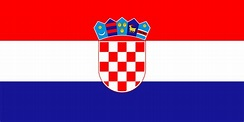
Dubrovnik
It is a 30 kilometre drive, two hours and two passport controls away to reach Dubrovnik from Trebinje, i.e. exit from Bosnia and Hercegovina and enter into Croatia. The Croatian border guard is extraordinarily uninterested in his occupation. Cigarette drooping from mouth and passport stamp in hand, he knocks the latter against the former scattering ash all over the place. I observe him through the window as I stand in line. My turn next and he has already lit another cigarette. Wipes the ash away with a chubby finger and stamps my passport without an upward glance. So be it.
As we descend towards the city, there is a compulsory photo stop. A specially built set of steps on the side of the road entices visitors to ascend for the iconic view, seen in so many travel guides, over the old fortified town of Dubrovnik jutting into the turquoise sea. A few small boats lie neatly in the harbour and some trees provide a leafy forefront. Looking left, under a cloudy sky, is the small green island of Lokrum and a large cruise ship.
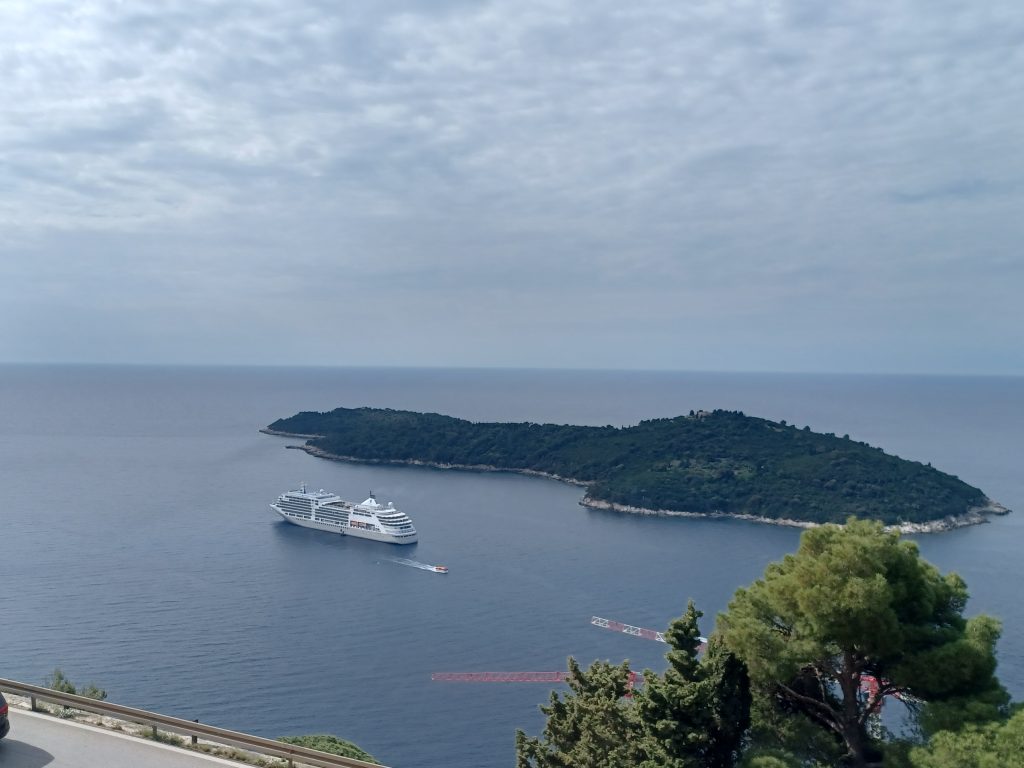
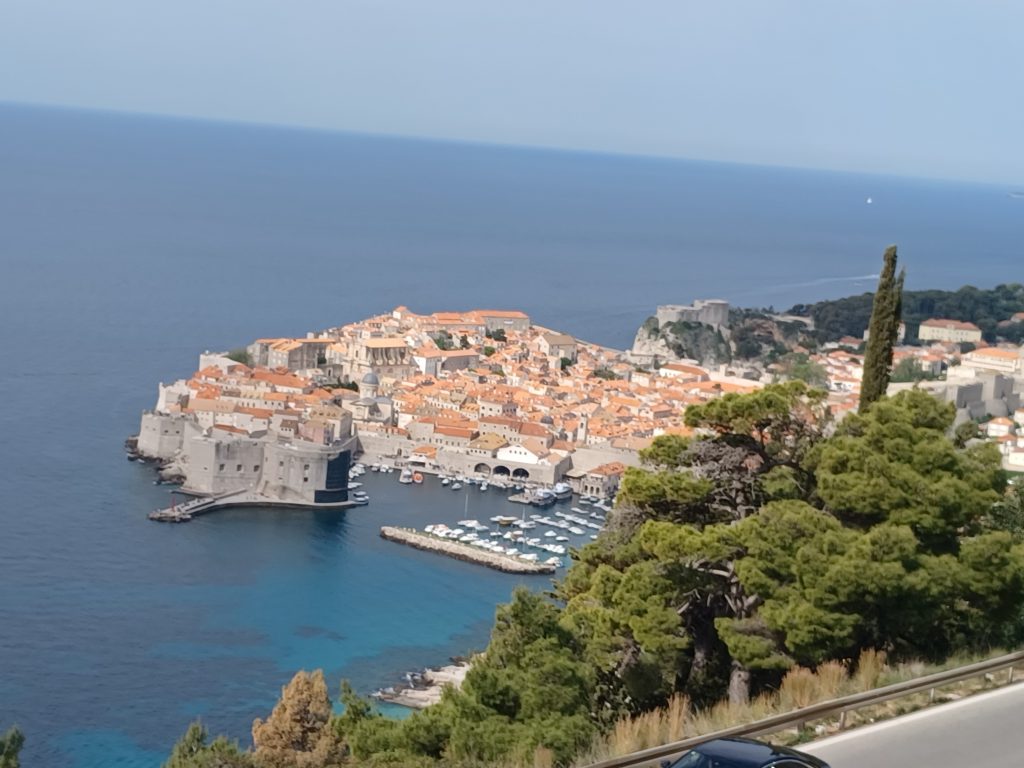
We pick up the guide at the harbour. She issues the group with earphones and transmitters. “The law changed recently,” she tells us, “and groups of over 20 people have to use these”.
Good idea actually as I can now hear the guide wheresoever I go, including when nipping inside the Assumption Cathedral, as she gives her spiel. Splendid Baroque building with its dome and statues of St Blaise, the patron saint of the city, on the façade. Inside the tall white nave are graceful white painted columns and a polyptych by Titian, portraying the Assumption of the Virgin, hanging above the altar. This Cathedral was more or less destroyed in an earthquake in 1667, and damaged during the Montenegrin earthquake of 1979.
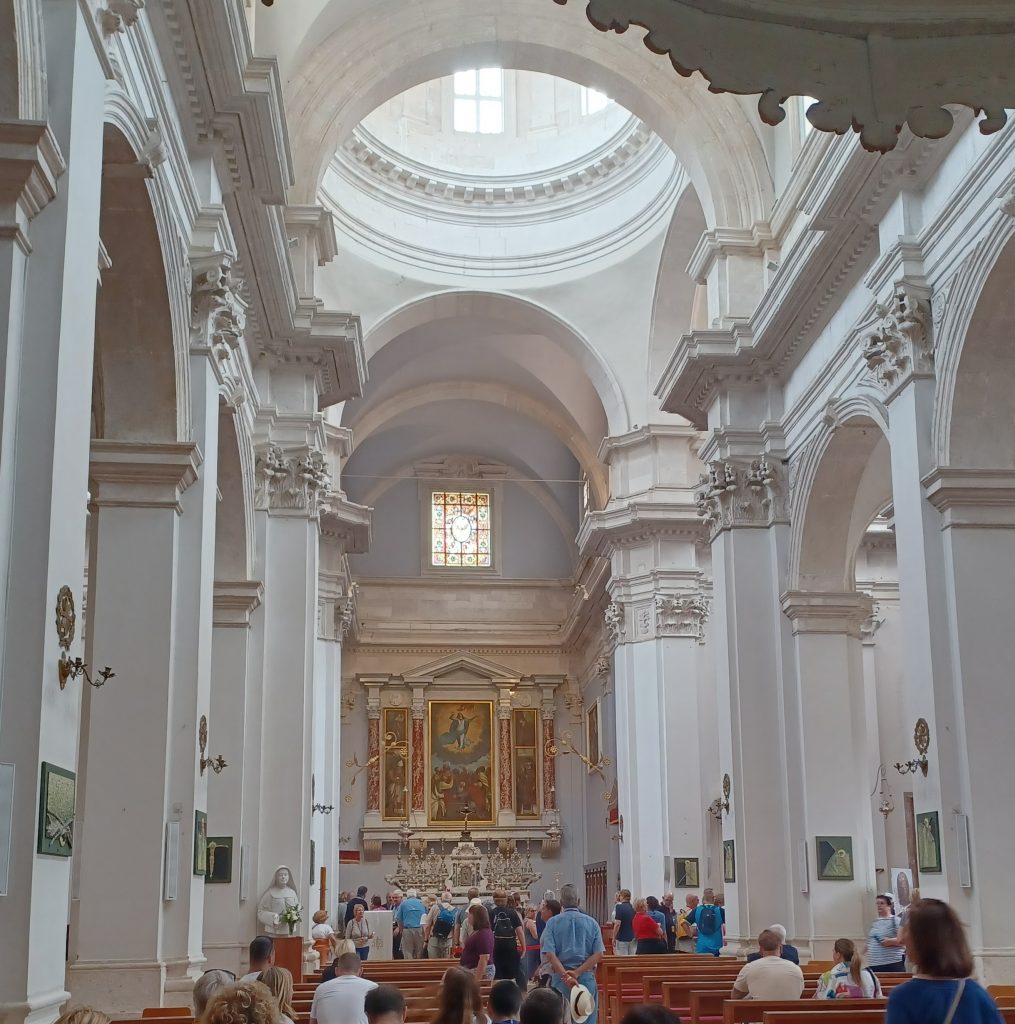
It again suffered much damage during the siege of Dubrovnik in 1991 during the Croatian War of Independence. I take a hasty photograph, then exit to join the group padding along the paving stones of the main pedestrian street, the ‘Stradun’, past the famous Rector’s palace, home of the Rector of Ragusa for over 400 years. Ragusa because this was the name of the Republic with the town at its centre from 1358 until conquered by Napoleon.
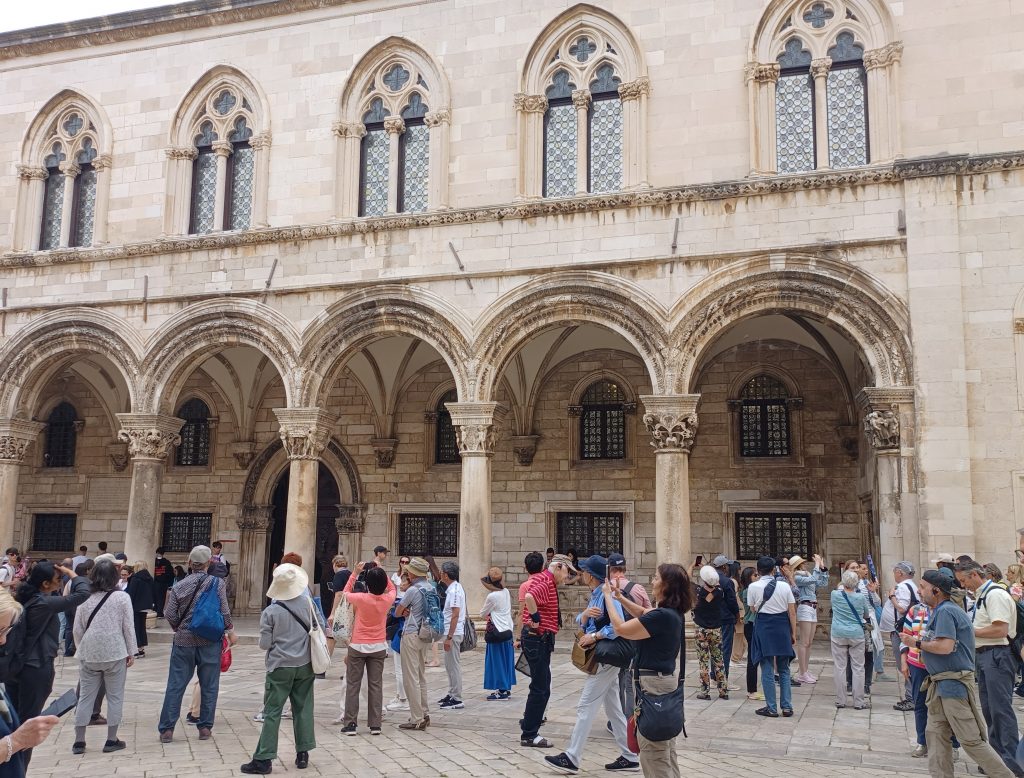
During its history Dubrovnik has been invaded, among others, by Slavs, the French under Napoleon, and most recently the Yugoslav People’s Army in 1991, but the latest ‘invasion’ is from tourists. The city is full. I have been here before but don’t remember it being quite this crowded. Most accommodation comprises Airbnb apartments or equivalent. Indeed we are told that only wealthy people can afford to live within the city walls. Has Dubrovnik sold its soul to the selfie snapping brigade, I ponder. It is scarcely surprising that we all flock here though. There are statues all over the place and arches, domes and columns with capitals adorn mansions, palaces, churches and monasteries. Smooth paved streets abound, some wide, some narrow with just enough room for a small café table or pot plant and space for one pedestrian to walk past. I notice a notice on the outside of one house informing us that this house had caught fire during the wars of 1992-1995. (Actually well over half of the buildings in the old town were hit during this period). Otherwise, you could be forgiven for not knowing there was ever a war here.
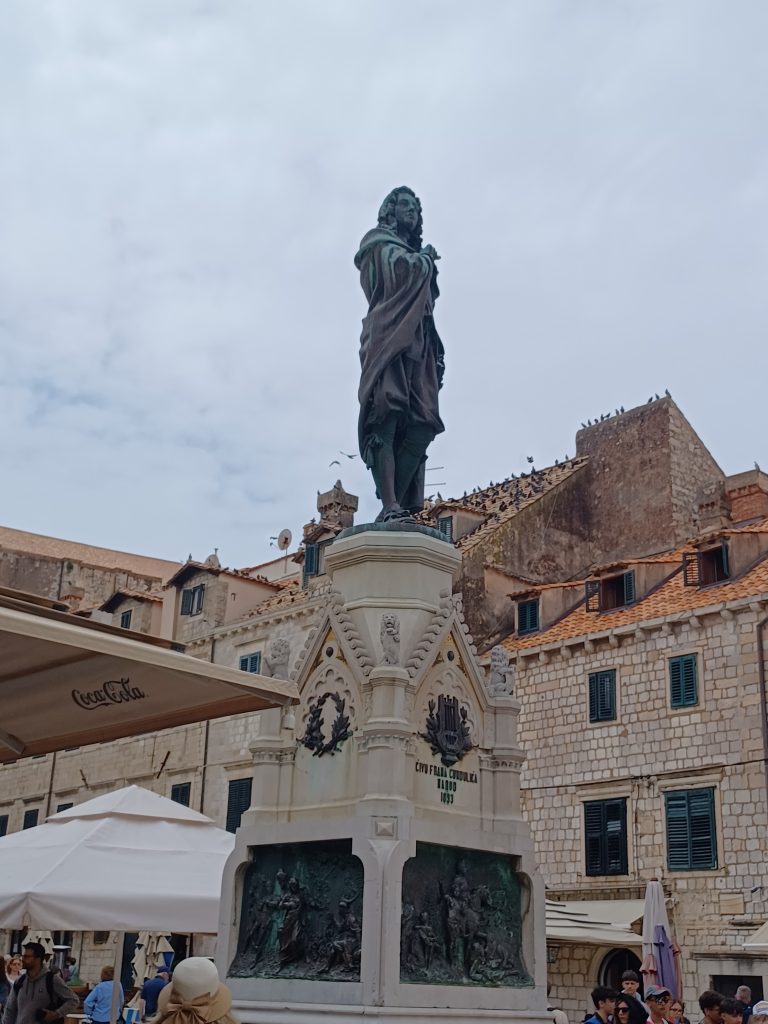
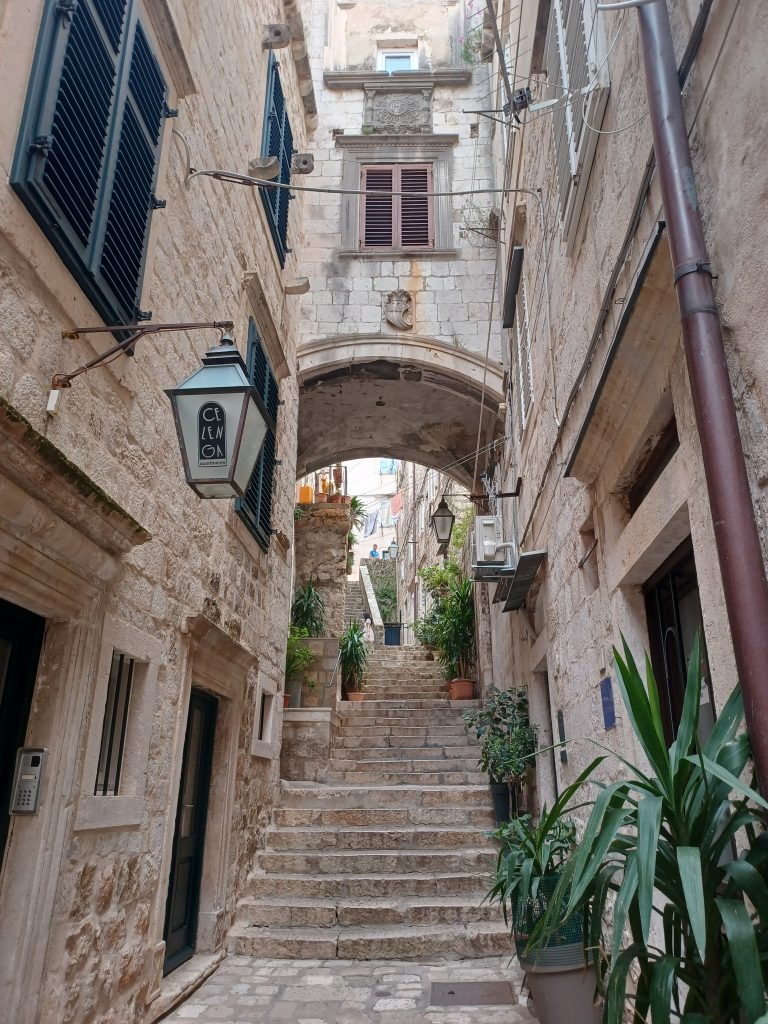
After the official tour, I aim for one of those narrow streets. A pizzeria appears on the corner. I am enticed to sit down at an outside table by a pleasant looking waiter. This will do nicely. It starts raining. Actually it pours. But I am positioned under a canopy. Smug. Waiter: “What can I get for you?” Self: “Pizza Napoli please”. Waiter: “And a glass of wine perhaps?” Self: “Absolutely!” Waiter: “I recommend Dingač. Very good local red wine”. Self: “Excellent, Yes please”. I am all for supping the local nectar. The establishment fills up with wet people. It is raining so hard that the water runs in rivulets down the canopy and drips through an aperture onto the paving. A bucket appears next to my table. Drip drip. Delicious pizza. Exquisite wine. Full bodied red. Expensive though. It costs far more to eat and drink in Dubrovnik than anywhere else so far visited on this tour. Eat enough for two, then stagger off to explore further.
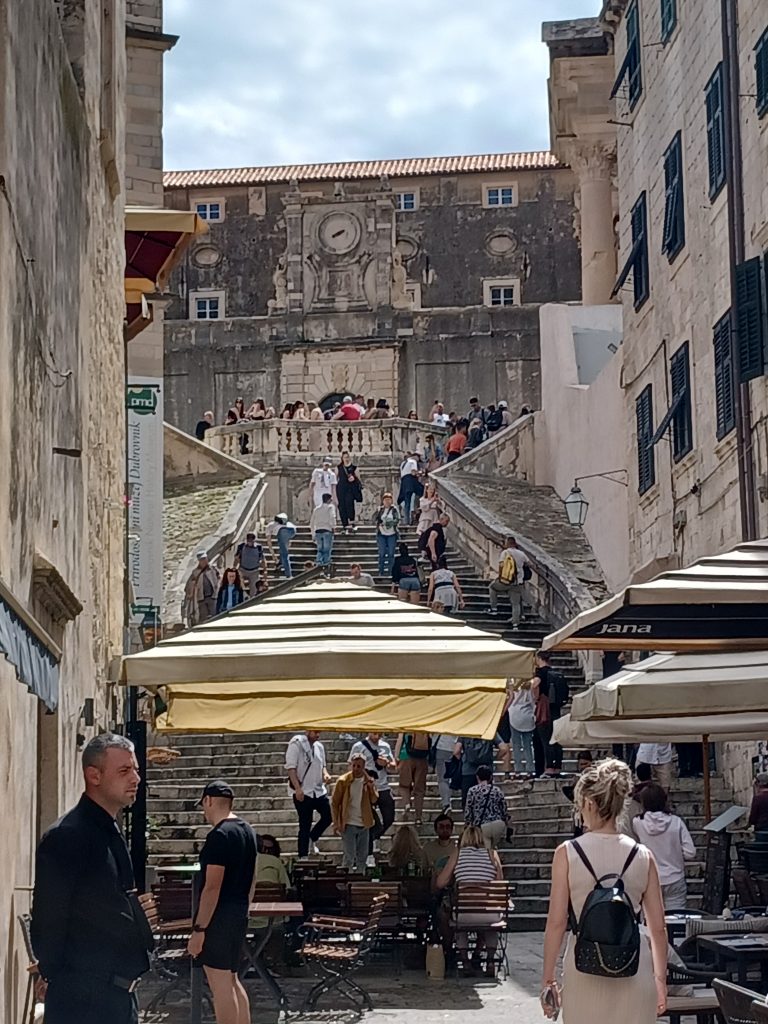
The rain has stopped. I head for the ‘Spanish Steps’ (actually the Jesuit Stairs), which the guide had joked about earlier, saying they are similar to those in Rome ‒ albeit a tad narrower. They lead up to the wonderful early 18th century church dedicated to St Ignatius, but so many folks are filing in and out taking pictures that it is hard to capture the spirituality of the place. Its full title is ‘Jesuit Church of St Ignatius of Loyola’, which celebrates a Holy Mass in English on Sundays, according to a notice on the doorway. There is a grotto inside dedicated to Our Lady of Lourdes, and a sign post claims that it is one of the oldest grottos built in Europe (1885).
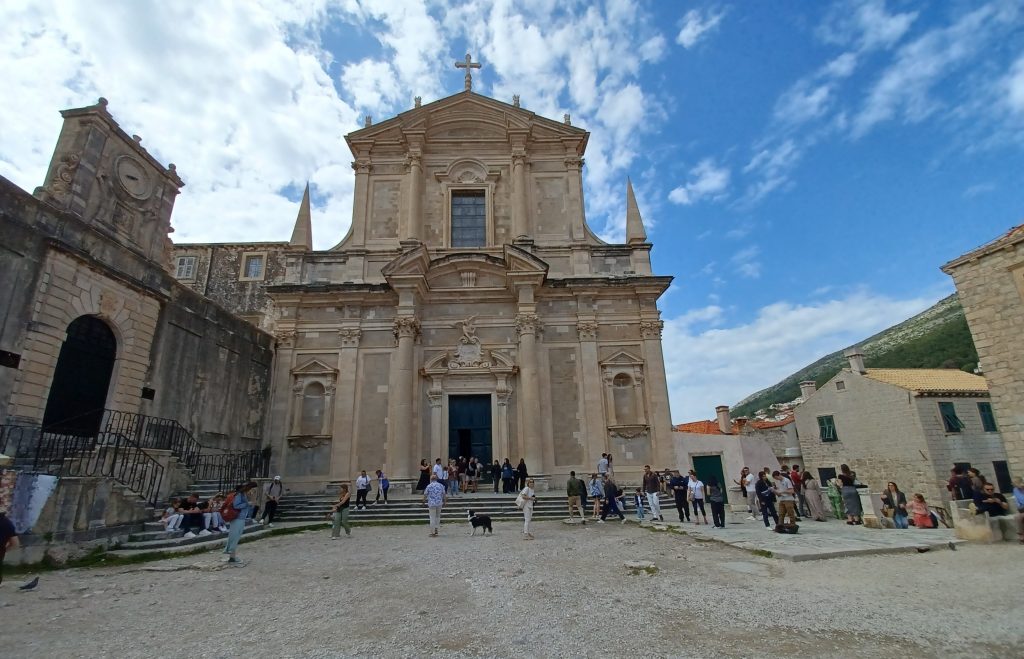
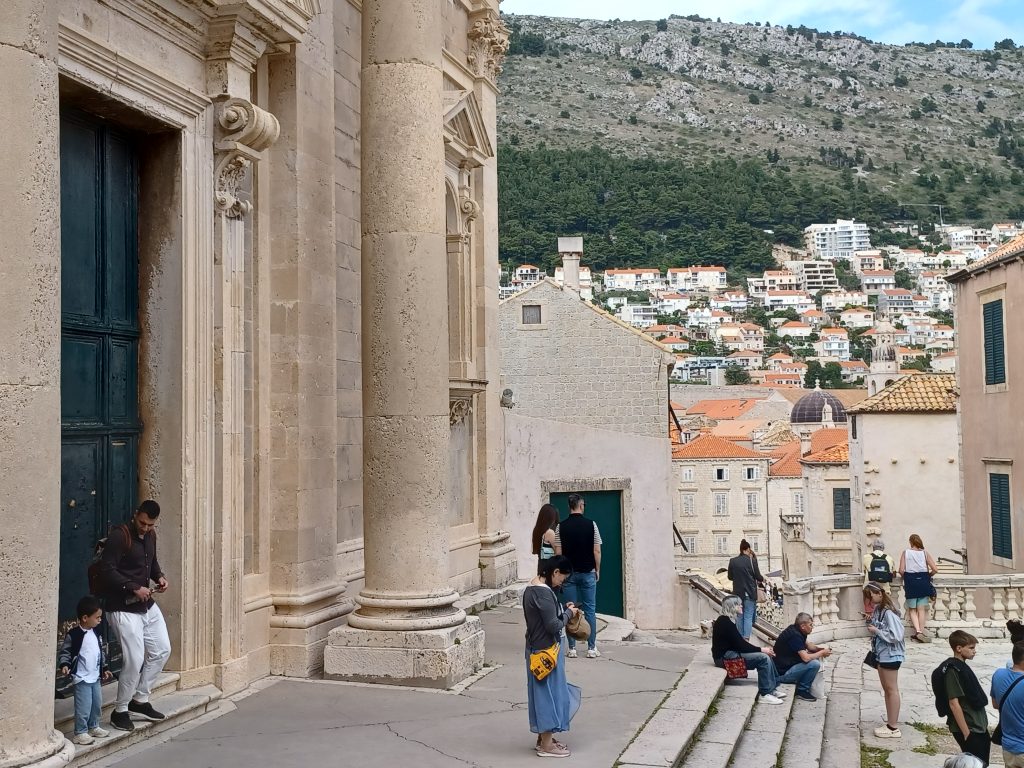
Where next I ask myself. I decide to walk inside Dubrovnik’s city walls. It costs 35 euros for a ticket to walk the almost two kilometres atop the defensive walls, so I don’t. Anyway, I did that years ago and don’t remember paying for the privilege. There are plenty of other things to do. The magic isle of Lokrum beckons. Doubtless a good place to get out of the dense squash of sightseers. Wander down to the harbour and step aboard the nice looking ferryboat with wooden seats, named ‘Skala.’
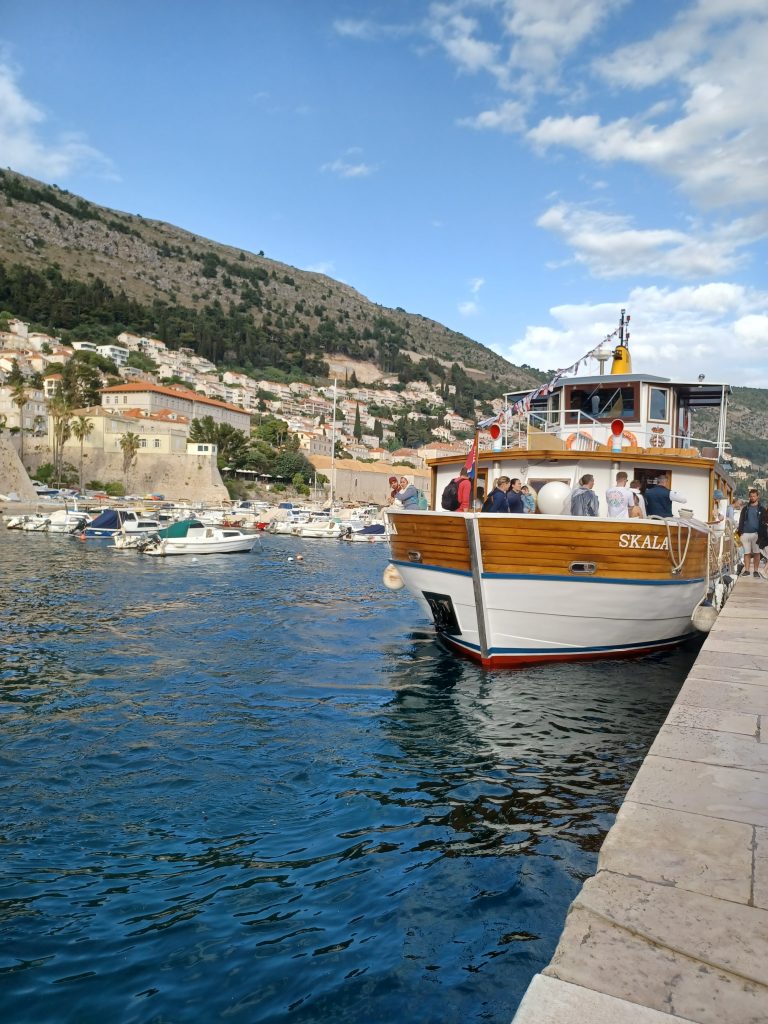
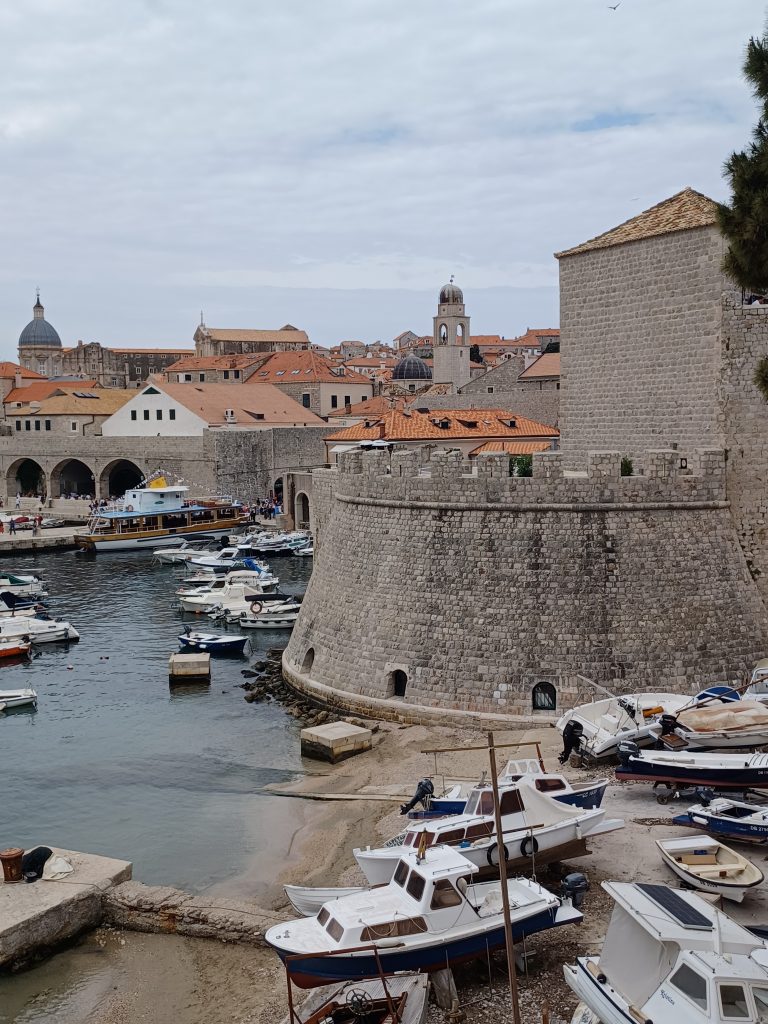
I gaze at Dubrovnik’s fortifications diminishing into the distance as we leave the harbour behind. Motor past the big white cruise ship, still at anchor. Unbeautiful to behold. A luxury private cruiser hoves into view with a defaced red ensign flying. Hmmm, nice. We round the headland and manoeuvre alongside a short jetty. It only takes fifteen minutes to get here.
Lokrum Island
Smells of pines and herbs greet me as I alight, and many olive trees, cypresses and cacti. I extricate my binoculars from my small backpack to do a spot of birdwatching in this protected nature reserve. I spy a blackcap and a blackbird but most of the birds I see are peacocks. The island is full of them. Apparently they were brought here by Archduke Maximilian of the House of Habsburg in the mid-1800s. Sadly for Maximilian, he it was who was shot in Mexico in 1867, having agreed to be installed there as the puppet Emperor of Napoleon III. The event has been immortalised in Manet’s painting, ‘The Execution of Maximilian’, parts of which now hang in London’s National Gallery. Anyway, good to know that he enjoyed visiting this lovely island and left the peacocks for posterity. I walk around the rocky shores enjoying the serenity. Only one or two other tourists here right now.
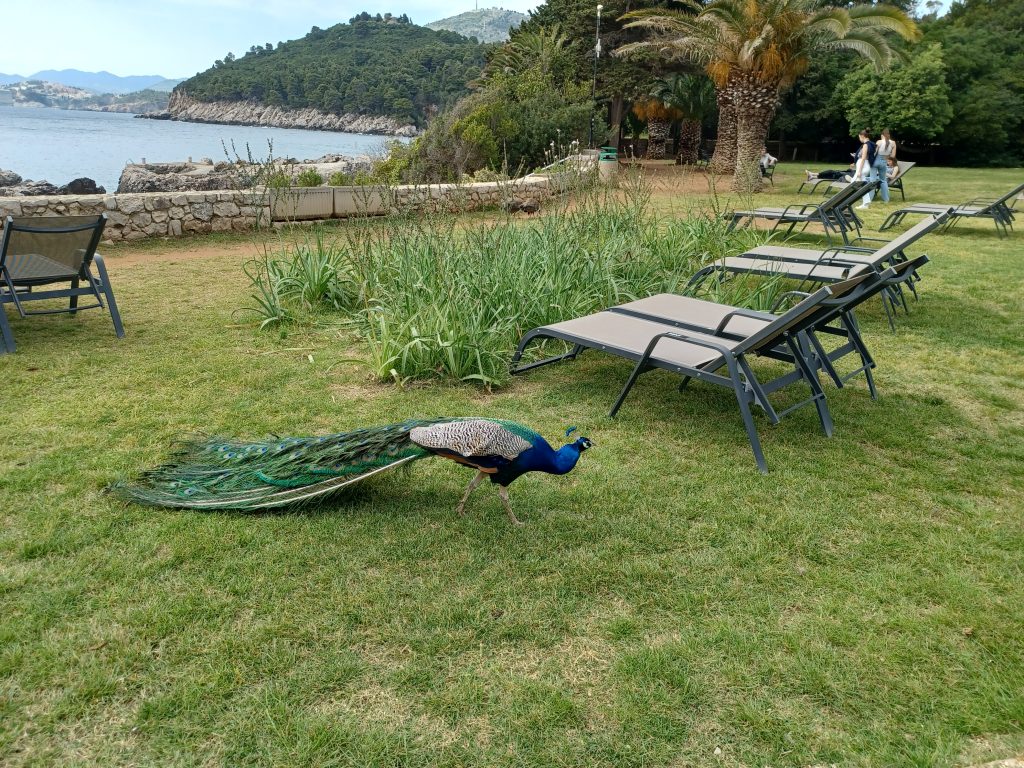
I head for the Benedictine monastery, dating back to 1023. Ancient stone building with its cloister garden with trees and hedges and bottlebrush plants with their spiky red flowers. So blissful after the noisy throngs of Dubrovnik. Upon further exploration I find out that King Richard the Lionheart was shipwrecked off Lokrum. Sounds very much like the story of St Paul being shipwrecked off Malta (see travelogue: Malta). Anyway, according to the information boards, King Richard was on his way back to England from the Holy Land after the third Crusade when he was shipwrecked off the island during a storm. The year was 1192. He vowed he would build a church to St Mary wherever he landed safely. Thus, he paid for the building of a church but it was constructed on the mainland in Dubrovnik, not here on Lokrum because, legend has it, the island was cursed when the last Benedictine monks were evicted. They had cultivated vines and made wine here, incidentally, a white in particular which was known as ‘Lokrum Drops’. Anyway, the lovely Assumption Cathedral, which I had nipped into earlier, was partially funded, I gather, by King Richard. Much restored since then of course.
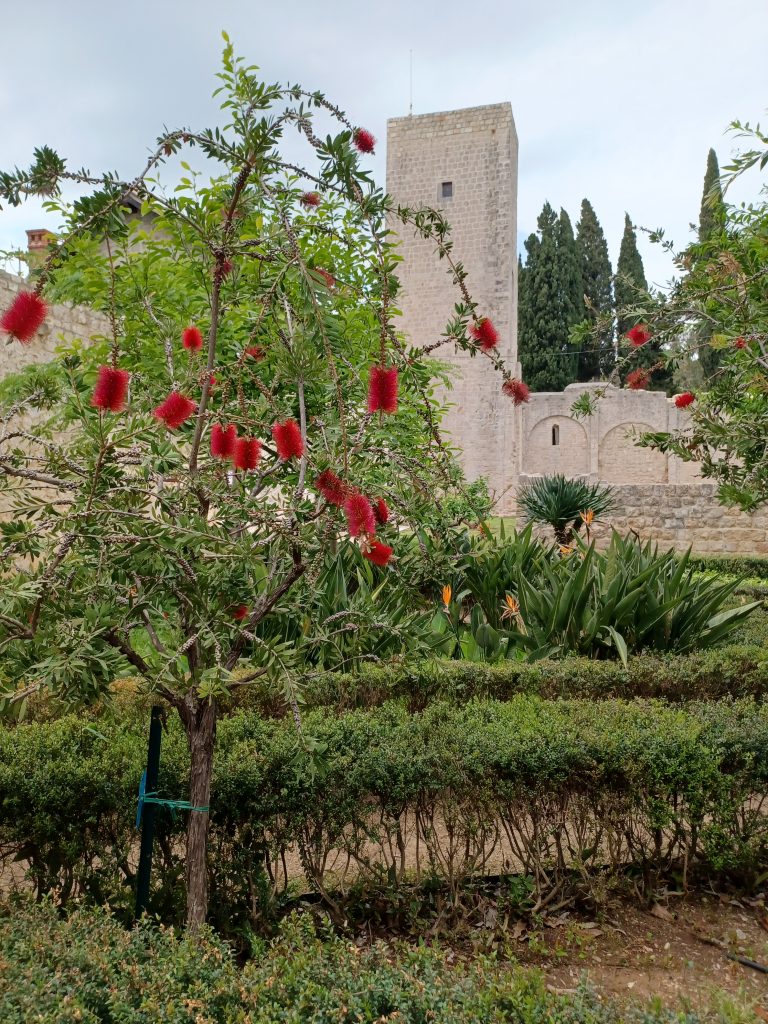
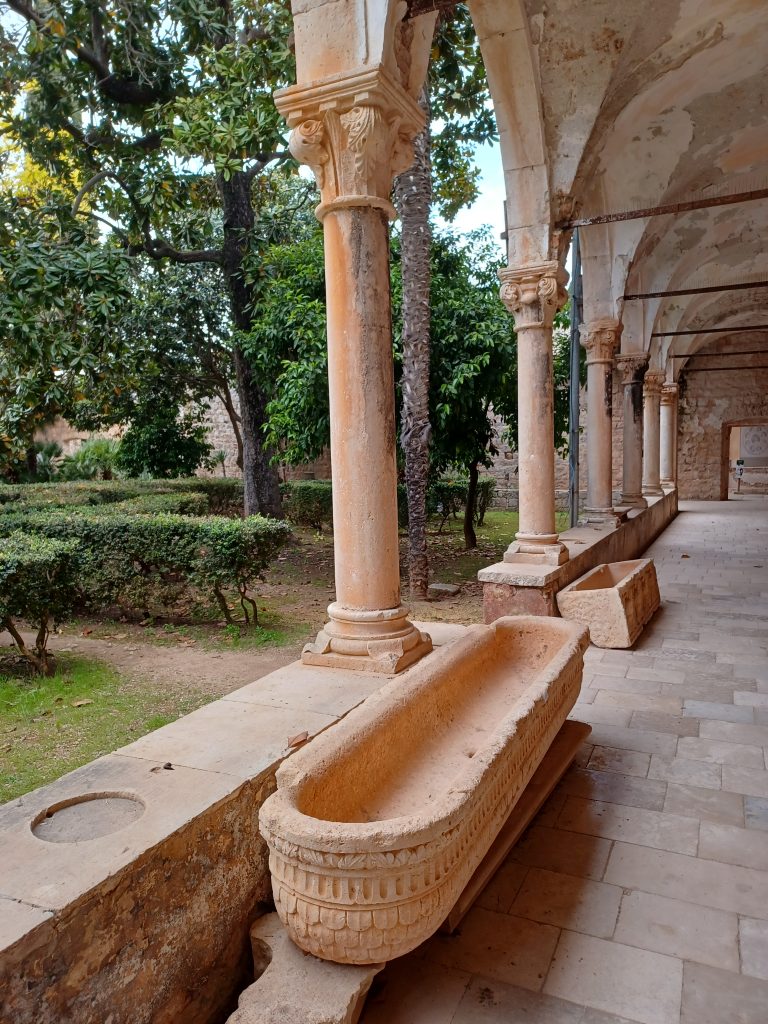
The last thing I expect to see in the old monastery is a replica of the ‘Game of Thrones’ iron throne. This is clearly a lesser known fact. Only two tourists turn up while I am there: “Ah here it is at last,” I hear one of them say. I am not a fan of the series. Too gory for me. But Dubrovnik and its surrounds seem to have been used a fair bit for the filming, for example the Jesuit Stairs, visited earlier.
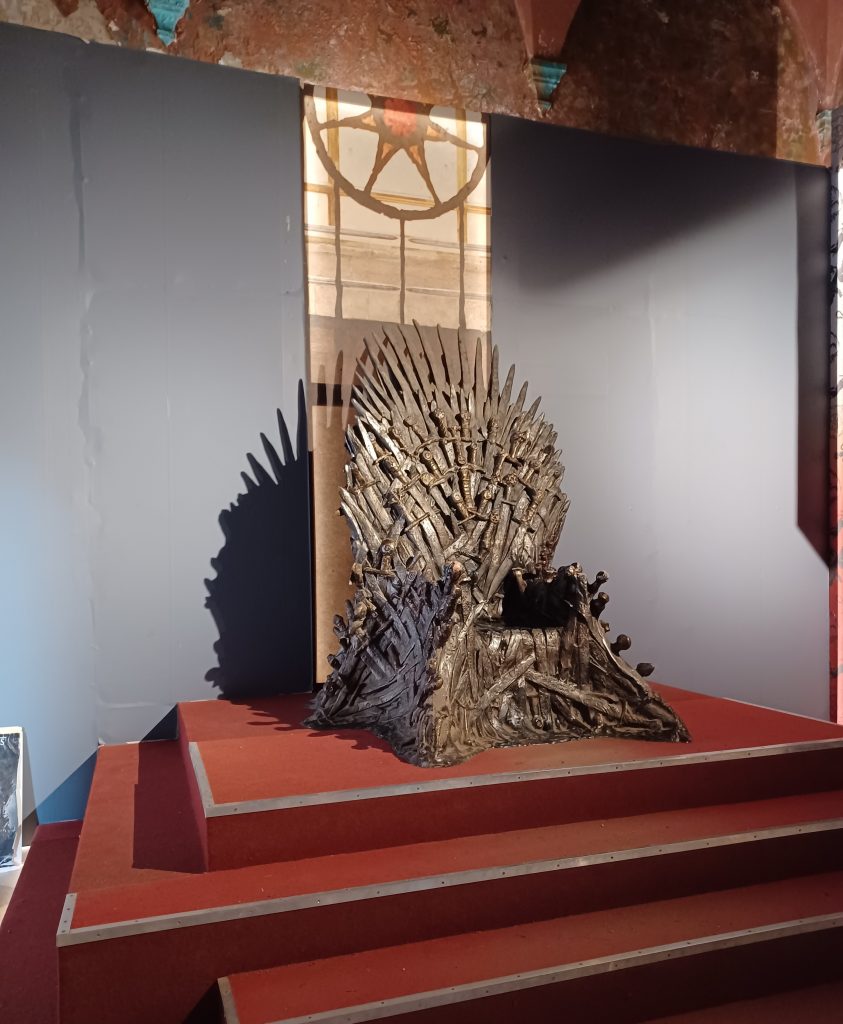
Raining again. Time to head back to the ferry. My non-existent sense of direction sends me 180 degrees in the opposite direction to that which I should be heading. A friendly tourist points me towards the ferry embarkation point. The wind has increased a bit and the trip back is a lot choppier than the outward journey. For some reason, the skipper takes us around the cruise ship. It is not a very pretty ship, as I have before mentioned. Six or seven decks of it. Somebody waves from its upper deck. Do the decent thing. I wave back. Bit of a breezy detour. I am glad I had the foresight to bring a cardigan, as well as a sunhat, with me. Some of our group were wearing shorts and sleeveless shirts this morning. I am usually prepared for inclement weather. I don’t like being cold. Even so, I feel slightly chilled on arrival at the port and seek out a warm drink before walking up through Dubrovnik’s outer walls to the pick-up point.
Trebinje
We are back in Trebinje, in Bosnia and Herzegovina, for the night. No doubt the tour company has calculated that it costs a lot less to reside here than in Dubrovnik, despite the fact that we could have crossed the border from Croatia to Montenegro without the detour and the extra border crossing via Bosnia and Hercegovina. I am fairly phlegmatic about it, however. Trebinje is a charming city in its own right with a city wall enclosing historic buildings. Could have spent a day here exploring at least. In fact, one of our group decided to resist the temptations of Dubrovnik and rest up here for the day instead. No doubt he had a jolly time of it. I only have an evening to wander around to see its churches, mosques and memorials.
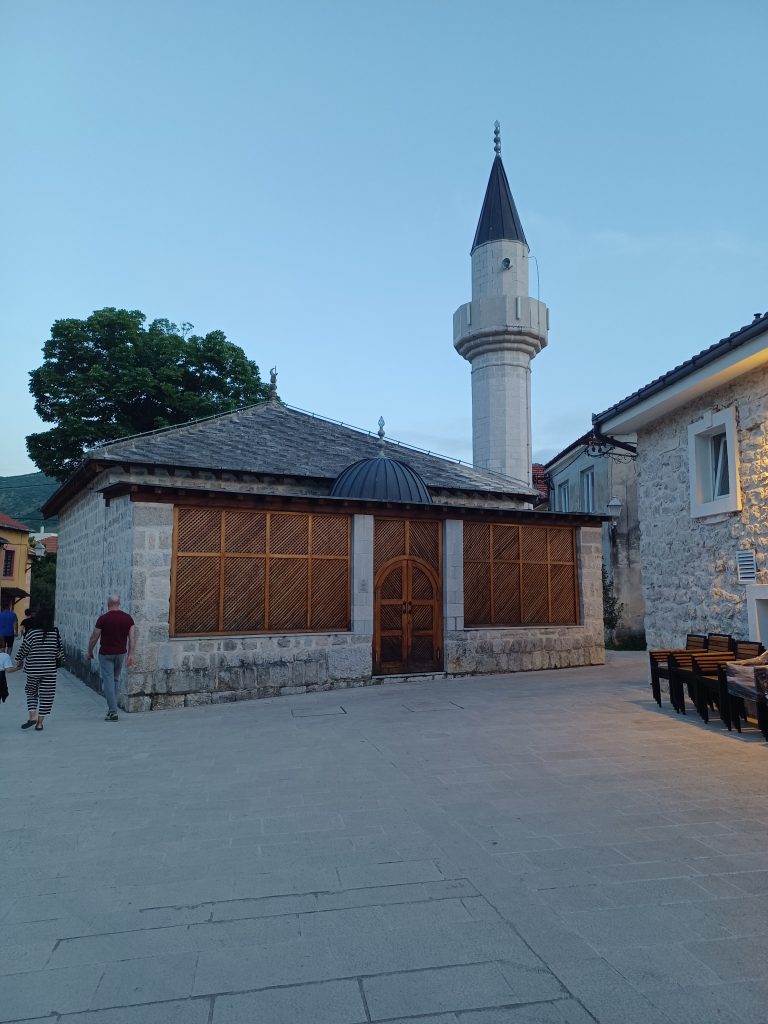
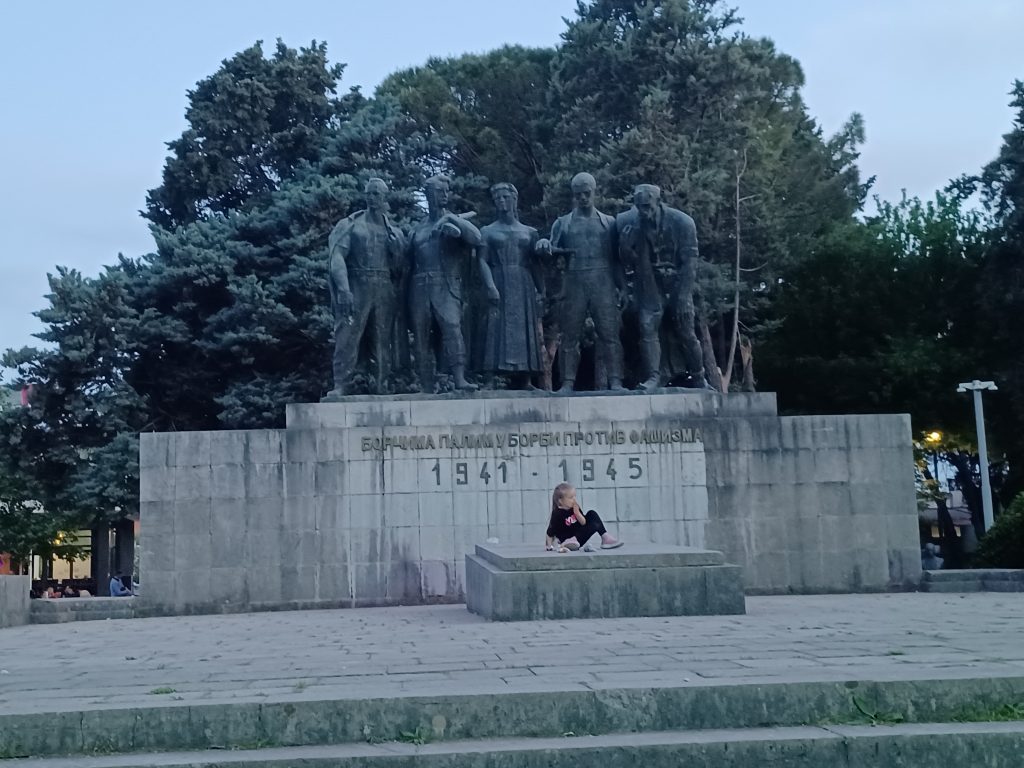
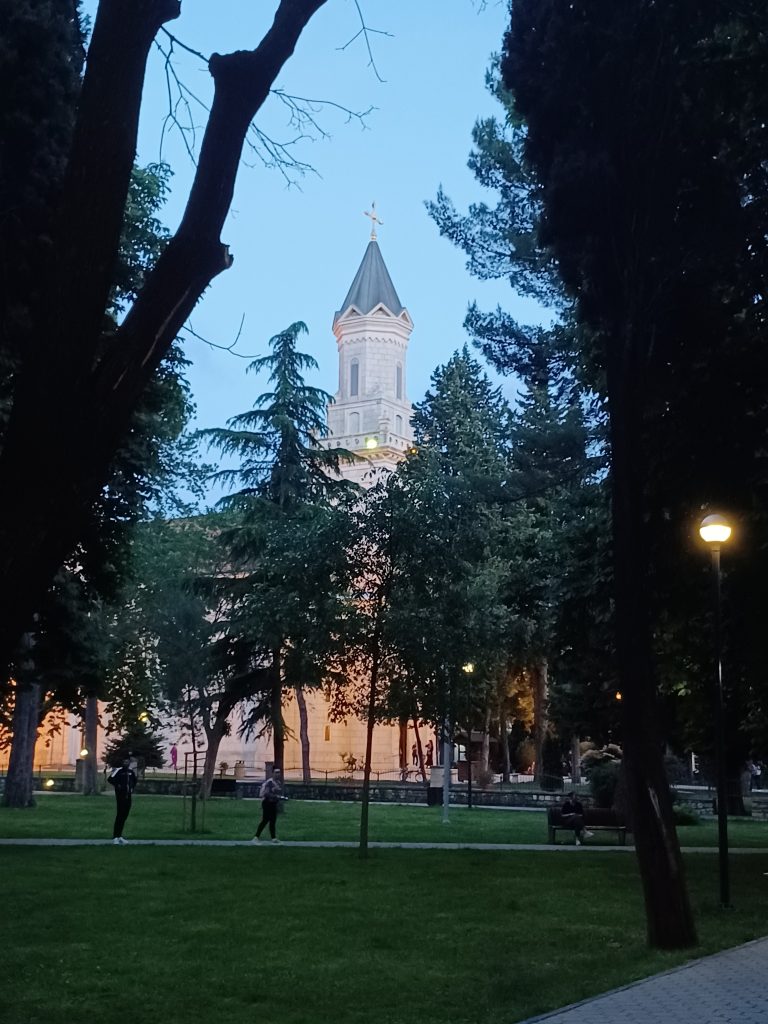
And next day sees us crossing the border into Montenegro.

Leave a Reply